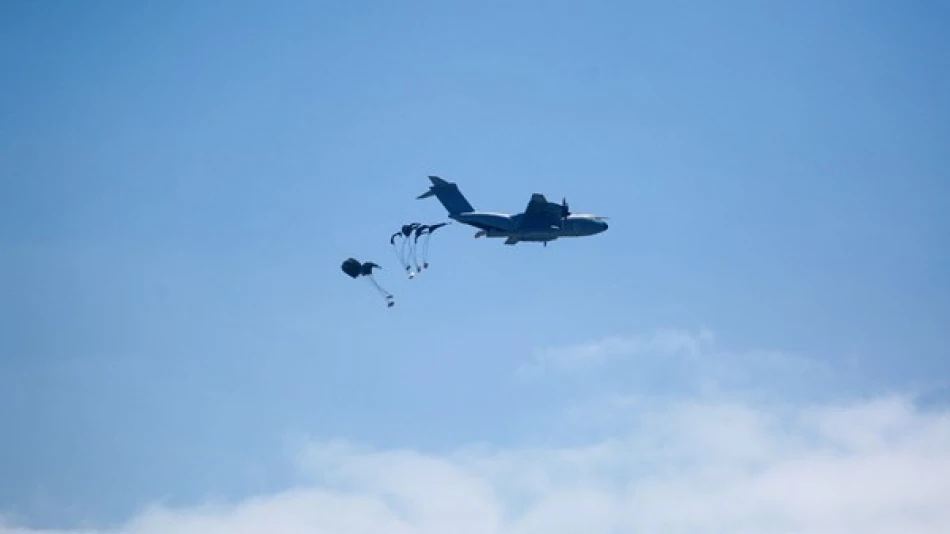
Germany Continues Airdrops of Aid over Gaza
Germany Intensifies Gaza Aid Drops as Humanitarian Crisis Deepens
Germany continues expanding its aerial humanitarian mission over Gaza, dropping 9.6 tons of food and medical supplies on Saturday as international pressure mounts to address what the UN warns is an impending famine in the Palestinian territory. The operation signals Berlin's growing involvement in emergency relief efforts amid stalled ground-based aid deliveries.
Scale and Scope of German Operations
A German Air Force A400M transport aircraft deployed 22 platforms containing essential supplies, launching from Jordan before conducting the precision drop over Gaza. The German military spokesman confirmed plans to continue Sunday operations, weather and security conditions permitting.
Germany has committed two aircraft to the mission, both operating from a Jordanian military base. This represents a significant logistical commitment from Berlin, which has historically maintained a more cautious approach to Middle East interventions compared to other NATO allies.
International Context and Coordination
The German airdrops align with a broader international response following Israel's recent decision to allow increased overland aid shipments. Multiple nations have joined aerial relief operations, creating an unprecedented multinational humanitarian corridor over one of the world's most contested territories.
This coordination mirrors similar international responses seen during crises in Afghanistan and Syria, but the Gaza operation presents unique challenges due to the territory's small size, dense population, and active conflict zone status.
Strategic Implications for Regional Diplomacy
Germany's prominent role in Gaza relief operations reflects Berlin's evolving Middle East strategy. Unlike previous conflicts where Germany primarily provided financial support, the direct military aircraft deployment signals a more assertive humanitarian diplomacy approach.
The choice to operate from Jordan is strategically significant, reinforcing Amman's position as a key regional partner for Western humanitarian operations. Jordan's cooperation provides crucial legitimacy and logistical support that would be impossible to achieve through other regional bases.
Operational Challenges and Effectiveness
Airdropped aid, while symbolically important, faces inherent limitations in addressing Gaza's scale of need. The 9.6-ton Saturday delivery represents a fraction of the territory's daily requirements for its 2.3 million residents. However, these operations serve dual purposes: immediate relief and sustained international attention on the humanitarian crisis.
The timing of increased aid permissions suggests diplomatic pressure is yielding results, with aerial operations providing leverage for broader negotiated access agreements. Similar patterns emerged during Syrian siege warfare, where international airdrops preceded expanded ground-based relief corridors.
Most Viewed News

 Layla Al Mansoori
Layla Al Mansoori






